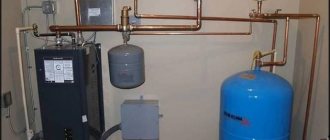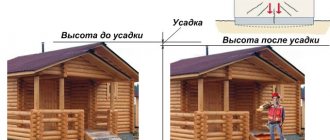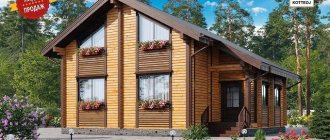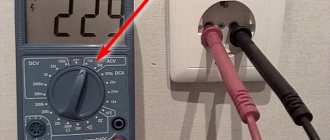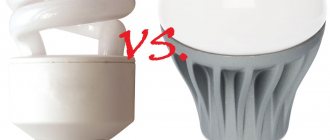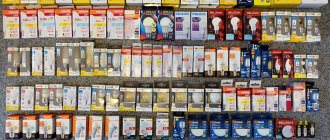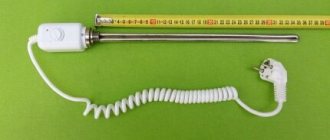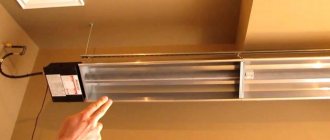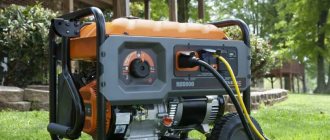The most economical way to heat a private home is a boiler using mains gas. But often, for objective reasons, such an opportunity is not available everywhere. In relative second place in terms of the cost of thermal energy are solid fuel boilers or heating from a fireplace/stove with a closed firebox (if the house is small), but given the need to store fuel and the complexity of maintenance, not everyone likes this heating method. Storing liquefied gas requires expensive containers. Liquid fuel, in addition to difficulties with storage, is characterized by expensive equipment and poor environmental characteristics. Electric heating in a private home does not have all these disadvantages. Except for one thing – the high cost of energy. Although in this case there are opportunities to reduce the burden on the family budget. What features does heating a house with electricity have? We’ll look at the most economical way to heat a house using energy in our article.
Electric heaters do not require chimneys and can be installed anywhere Source poradavam.com
Video description
In our video we’ll talk about heating in a private country house. Our guest is the author and presenter of the Teplo-Voda channel Vladimir Sukhorukov:
Oil radiator
Considered uneconomical - critics argue that it should not be used as a heating device due to high energy consumption and low output. But it is this type of device that has one of the highest efficiency - about 98%. That is, it converts almost all electrical energy into heat (the law of conservation of energy has not yet been canceled), and those minor losses of 2% are due to the resistance of the internal walls of the radiator to the coolant. Yes, it is inertial - it takes a long time to warm up, but it also takes a long time to cool down.
On a note! Accordingly, when using an oil radiator, the room in which it is used will warm up for a long time.
But this is a property of all batteries, including water heating, in which the main method of heat transfer is radiation, which works slowly.
The main disadvantage is the “rough” power control and the use of mechanical thermostats. And such inaccurate control of temperature conditions makes an oil radiator ineffective when trying to optimize the cost of heating with electricity in a private home. And yet, it has a rather high body temperature when operating at full power, which is dangerous if there are small children in the house.
In defense of oil radiators, let’s say that these are still devices for temporary local heating and high energy efficiency has never been required of them.
There are models of oil radiators that can be hung on the wall Source b-sector.ru
Fan heater
It is often written about a fan heater that it burns oxygen. But “oxygen combustion” is nothing more than an oxidation (combustion) process, and the maximum that can burn at a fairly low temperature of the coil is organic dust in the air. Therefore, it is incorrect to talk about burning oxygen (after all, it’s not wood that burns) since this insignificant volume must be replenished as a result of mandatory ventilation of the room.
The efficiency of such a device is slightly lower than that of an oil radiator (part of the electricity is spent on operating the fan), but it is not very different, considering that the power of the fan motor itself is small (about 50 W out of a total of 1 or 2 kW). The advantage is that the room warms up very quickly. Disadvantages are a constant noise level (albeit insignificant) and dust transfer throughout the room. And the main drawback of these household appliances is manual power adjustment and the illusory possibility of creating an automated heating system based on fan heaters
A fan heater is the most compact heating device, and it is great for heating a small area Source romb.ua
Therefore, it is necessary to emphasize once again that the main reason why some types of electric heaters are not suitable for heating a home is not the efficiency (almost all of them are above 95%), but the impossibility of automating system control. It is this factor that does not allow optimizing the operation of the heating system, and without this it is impossible to heat a house with electricity cheaply.
Drawing conclusions
Thus, electric boilers become one of the few ways to organize heating in an area that is cut off from centralized networks:
- The devices are relatively affordable and do not require special conditions in the layout of the rooms where they are installed.
- Since heating is organized without open fire, boilers will not lead to a fire.
- They are environmentally friendly, virtually silent, and easy to maintain.
- All varieties have many advantages and, of course, minor disadvantages.
- Each type of boiler is quite suitable for use, so you can choose any one based on your financial capabilities and the power required for a particular home.
However, the selection of the device should be approached responsibly so that the boiler serves for many years, and a cozy home is heated without problems in any season of the year. Having concluded that heating a house with electricity, the most economical way is infrared, but this will require installation costs.
In conclusion, we suggest that you read the video and watch an overview of heating systems for your home and make the right decision.
Efficient methods of heating with electricity
Heating with electricity in a private house has the main advantages over all others - these are simple and accurate methods for monitoring and regulating the operation of all components and elements. Even the sensors and display of information about operating modes are more accurate than those of equipment using other types of energy carriers.
When we are talking not just about local heating, but about the heating SYSTEM, this means the following:
- Heating works not only when there is someone in the house (therefore, a wood stove is not a system).
- You can manage the system (set up, regulate), including remotely. Therefore, an oil radiator or fan heater simply plugged into an outlet is not a heating system.
Individual electric heating of a private house has four options for heating systems:
- autonomous water heating systems based on electric boilers:
- use of infrared ceramic heaters;
- electric convectors with electronic thermostats;
- electrical converters with inverter thermostats.
All these systems can be adapted into a smart home system and controlled remotely.
Gas electricity or wood
Today, many people prefer electricity as an energy source for heating their homes. This heating method has a number of advantages that make it modern, convenient, efficient and economical.
The opinion of developers and owners of country and private houses is that electric heating is the most profitable, since it does not require many approval documents. And there will be no need for large financial costs when installing this heating system. The average market price of an electric heating boiler for a heated area of 100-150 sq.m. is 35-36 thousand rubles. If the area of the house is smaller, then the cost of purchasing a boiler will be lower. At the same time, the choice of electric heating systems is so wide that every home owner can choose what meets his requirements for ease of installation and an affordable price. Other benefits include:
- equipment for an electric heating system does not require the expenditure of time and money to obtain a project, technical specifications and commissioning certificate, as for example with gas equipment;
- there is no need for excavation work and pipe laying;
- electric heating has a high level of safety and environmental friendliness (electric boilers, unlike gas boilers, never explode and do not form dangerous combustion products (carbon monoxide);
- Electrical heating devices are fully automated, simple and reliable to use.
INTERESTING: Plastic rings for wells: types, sizes and installation
In addition to electric boilers, you can use alternative electrical equipment, for example, electric convectors for local heating of each room separately, thermal curtains, heated floors, which will allow you to maintain a comfortable temperature in the house without high financial costs.
Along with the advantages, the electric heating system also has disadvantages. There are few of them, but they still exist. First of all, the disadvantages include:
- The need for stable voltage. If the voltage constantly fluctuates and power outages often occur, then it is not practical to equip the house with an electric heating system.
- High power consumption. Especially in the autumn-winter period. For heating a house with an area of 150 sq.m. you will need 15 kW per day, not counting other electrical appliances.
- High cost of electricity.
For clarity, let’s compare electricity with other energy carriers – solid fuel (wood) and gas.
Stove heating in a house with an area of 100-150 sq.m. will require the purchase of 20 cubic meters of firewood for one heating season (7 months - from October to April). The average market price for 1 cubic meter today is about 2,000 rubles, and birch firewood is 3,500 rubles per cubic meter. One heating season will cost the home owner a decent amount. As you can see, there is no saving as such. Unlike electric and gas heating, a wood stove requires constant attention and monitoring, as it has a high fire hazard.
Gas heating for any area of the house is several times cheaper than solid fuel and electricity. However, not all regions, and especially small villages, have the opportunity to join the main gas pipeline. But even if there is such a possibility, equipping a home with gas heating may not always bring savings. If we evaluate each energy carrier in terms of total costs, including the purchase of equipment, installation and operation, then electricity will be much more economical.
INTERESTING: Sewerage for a private home: types of systems and their operating principles
Heating with electric boiler
This is a classic diagram of an autonomous heating system. There are two options for heating the coolant - indirect and direct.
Electric boilers of indirect heating come in two types: heating elements and induction.
The design and principle of operation of heating element boilers are quite simple - there is a heating coil enclosed in a sealed metal shell with a dielectric heat-conducting filler, the heat from the spiral through the filler is transferred to the surface of the heating element shell, with which the heating system coolant is in contact.
This is what the “filling” of a 9 kW heating element boiler looks like, which, despite its compact size, is capable of heating a house of 100 m2 Source mirvera.ru
Induction boilers have appeared for domestic heating systems relatively recently. Their operating principle lies in the property of metals to heat up under the influence of an alternating magnetic field. The heating element itself is an inductive coil with a ferromagnetic alloy core, through the “secondary winding” of which the coolant passes.
Scheme of operation of an induction heater Source josri.ru
The peculiarity of direct heating electric boilers is that water not only acts as a coolant, but is also part of the electrical circuit - alternating current passes through it between the electrodes. Hence the name of the boilers - electrode.
Each type of boiler has its own disadvantages. Heating elements form scale, which leads to a decrease in the useful power and service life of the boiler. Induction ones are quite expensive, bulky and have “stepped” power adjustment. Electrode ones have strict restrictions on the quality and composition of water, which must have a certain specific electrical resistance to alternating current.
A cascade of four electrode boilers for heating a large house Source obriy-ua.com
Well, the main disadvantage of heating a country house with an electric boiler is the presence of the coolant itself and the “bulky” circulation system of pipes and radiators. Setting up such a system is costly, and the efficiency compared to direct electric heaters may be lower if circulation pumps are used.
Method 5 - induction boiler
An induction boiler is a transformer with two types of winding. The resulting eddy currents follow the short-circuited loop, which is the boiler body. The secondary winding receives energy, which is converted into heat, heating the coolant.
Induction boilers heat your home quickly, can operate at low voltage, and have no parts that can fail. The efficiency of such a boiler is almost 100% and does not depend on the service life.
The photo shows an induction boiler EPO Evan 9.5 kW, Russia
Video description
Video about infrared heaters:
There are three fundamentally different types of infrared heaters:
- reflectors in which the filament coil is enclosed in a quartz glass bulb;
- panel - a heating element is “soldered” in a ceramic monolithic slab;
- film - with carbon coating on a polymer film.
Heating a house with electricity of the first type refers to heaters operating in the short-wave range of infrared radiation.
Such devices can be used as an additional heater, but not as a basic element of the heating system of a private house with electricity.
Disadvantages - the lowest efficiency (due to the visible part of the radiation), lack of precise temperature control and high case temperature.
The second type of device operates in the soft long-wave range. The maximum temperature of the ceramic panel does not exceed 90°C, but on the body it is even lower. There are two types of control - mechanical and electronic thermostat. The first option involves manual control and its accuracy is low. Using electronic thermostats, you can set the temperature with an accuracy of 1°C.
The infrared panel is so safe that it can be hung on wooden walls Source centr-tepla.in.ua
The peculiarity of film heaters is that they heat not the air, but the objects in the radiation zone (and the objects then the air). Therefore, it is not practical to use them at home as the main heating system. Knowing this property of heating films, you can use them in the right place - where a person is located directly at this time, on open verandas, garages. I turned it on, and it was immediately warm; when I left, I turned it off, so as not to heat up the street or the garage where no one was there.
Installing films in the bedroom is uncomfortable: if you are in the zone of action of the heater, it will be hot, if not in the zone, then it will be cold. The best option is to use them as part of a heated floor - this is most comfortable for a person when his feet are warm and his head is cool. Operation is controlled automatically using a temperature sensor-thermostat pair.
If there is not enough space on the floor, then the film heater can be mounted on any free plane Source otdelka-expert.ru
Method 7 - infrared heaters (the most economical)
Infrared heaters are considered the most economical of all types of electric heaters. They do not need heating elements and water pipes. Infrared heaters heat objects, not the room. Then the heated objects heat up the air. If an electric boiler can be compared to a kettle, then an infrared boiler can be compared to a microwave oven.
Infrared panels are especially popular. They are installed on the ceiling or walls of residential and industrial premises. Since the heating area is increased, the room becomes warmer faster than usual. Such a panel can be used as an independent heating source or as an addition to an existing system. An infrared heater goes well with electrode boilers. For example, an infrared heater can only be turned on in spring and autumn, when it is too early to turn on the main heating, or when it suddenly gets cold outside.
Pictured is a GROHE infrared panel, Germany
Convectors
A convector is a metal body of a certain design with an inlet and outlet to create the effect of air convection. There is a heating element inside the convector. Heating elements come in several types (in order of technical evolution): needle-shaped with filaments, heating elements, X-shaped monoliths, and monoliths with “scales” - Hedgehog. The inlet channel is closed with various types of filters to protect against dust, the outlet - with a decorative grille to protect against the ingress of small objects and more uniform distribution of heated air.
The convector body not only serves as protection for the heating element, but also increases the speed of the upward flow. Due to this, with the same power, the room is heated faster than from a water heating battery.
The stylish convector panel looks great in a modern interior Source teplo-vsem.ru
Convectors have three types of thermostats - mechanical, electronic and, more recently, inverter.
A mechanical and electronic thermostat is a thermal relay that turns the convector on and off depending on the temperature set on it. In a mechanical thermostat, the temperature is set by a manual regulator, often “by eye”; in an electronic thermostat, by touch buttons with a digital indication of the temperature value.
The inverter thermostat (control unit), unlike the mechanical and electronic thermostat, which operate in on/off mode, controls the operation of the convector according to a different principle - with automatic change of heating power, which allows achieving high energy efficiency indicators. Such savings can reach 40-70% of electricity compared to the usual on/off convector.
The reason for this saving is in such a thing as hysteresis: this is the temperature difference at which the thermostat turns the device on and off. Convectors with a mechanical or electronic thermostat turn on and off not when the set temperature is reached exactly, but with an error predetermined by the manufacturer. This is done so that the heater does not turn on and off at a high frequency (the lower the hysteresis, the higher this frequency). In this case, the automation would quickly fail. Therefore, such convectors always have a difference of several degrees between turning on and off, no matter how accurately they measure the temperature. And these extra degrees on/off of convectors consume extra electricity.
A convector with an inverter thermostat operates according to a different algorithm: it does not have parameters such as the temperature at which the heater turns on and off. The inverter thermostat does not turn off/turn on the heating, but automatically reduces/increases the heating power depending on the temperature difference and the rate of change of this temperature.
Possible options
Before you begin choosing suitable heating equipment, you need to decide on the configuration and relative arrangement of the elements of the heating system. You can achieve the desired result in different ways. Electricity can be used to heat a country house.
- intermediate coolant. The option involves installing a heating circuit within which the coolant continuously circulates. As it heats up, the pipe begins to release heat into the surrounding space, gradually warming the air to the optimal level. To implement such a scheme, a project is first developed. The characteristics of the elements of the future system and their spatial location relative to each other are calculated. The optimal location is selected;
- devices with direct heat transfer. Such equipment allows you to avoid installing a heating circuit. Heat is transferred directly from the source to the surrounding space. They are less inert compared to the previous version.
When using an intermediate coolant, special attention is paid to the order of pipe routing. She may be:
- one- and two-pipe. The latter option allows you to create comfortable conditions in all rooms at the same time. The heated coolant is supplied through one pipe, and the cooled coolant is sent to the boiler through another;
- horizontal or vertical.
Special attention is paid to the installation location of radiators. They must give off heat in full, ensuring uniform heat distribution throughout the entire interior space. The most effective and efficient layout is considered to be one that involves placing radiators around the entire perimeter of the room.
An example of a real system with an intelligent control circuit for electric heating at home
NOBO, a leading European manufacturer of convectors, produces two compatible systems for “smart” control of electrical appliances. Including “warm floors” (via a thermostat) and any other household appliances that are connected to the network (via a panel, a “break” in the circuit or turning on/off sockets). To do this, they produce special thermostats, socket receivers and hidden-mounted relay receivers.
Using such a system, you can monitor and manage the operation of up to 100 devices or group zones. And thermostats of the 700 series provide 4 operating modes for convectors: comfortable, economical, non-freezing (air temperature 7°C) and “off”. According to the manufacturer, the flexibility of such a control system for convectors and heated floors allows you to save up to 25% on electric heating at home.
One of two control schemes for a multi-zone electrical system Source stroydoma74.ru
Heating your home in winter using electricity using alternative methods
But, as they say, homeowners cannot live by boilers alone, especially at a time when they have to constantly reinvent the wheel in order to save energy consumption. These are the alternatives that will be discussed.
Convectors
An ideal option for heating households located in a warm climate zone, where the minimum winter temperature does not fall below 10 degrees Celsius, are convector units.
Relatively lightweight and compact, these heating devices provide high-quality air circulation in the room, warming it over the entire area and at all levels.
The efficiency of such installations is usually about 80% - not the greatest indicator, to be honest, but the savings are real. It is also worth adding a high degree of safety here, because even with internal heating of the convector plates to 100 degrees, their surface temperature will not exceed 60 degrees.
Oil radiators
Another effective solution for relatively warm winters and small areas that an oil heater can heat in about half an hour. The main advantage of such heating devices comes down to the oil circulating inside the accordion, because the density and other physical properties of this coolant allow it to retain heat in the house for much longer.
Their small size and ability to be transported indoors deserve special attention, since the vast majority of oil heaters are equipped with convenient wheels.
Hot oil circulates over the entire area in the oil radiator, which gives a longer thermal effect
Infrared
But if you choose the most cost-effective heater, then in this matter there are still no equals to infrared heating devices.
Wherever these thin panels are installed - from walls to ceilings, receiving heat much faster than from any other alternative equipment.
In addition, the good news is that such heaters are suitable both for independent use and as an effective addition to other equipment, such as electric boilers.
See also:
10 economical tips from Soviet housewives on how to survive after the holidays
Fan heaters
And finally, you can always get a compact fan heater (in common parlance, a blower). So, despite its miniature size and primitive design, which involves a fan driving hot air, the blades of which blow on a hot spiral, it can quickly heat a small room without any serious energy consumption.
Of course, the blower cannot compete with all the devices discussed above, but as an option for ensuring a comfortable demi-season period, it is quite decent.
You won't be able to heat a house with fan heaters, but they can quickly warm up a room
Electric heated floors
The most popular option for electric heating of a private home is based on the use of a heated floor system. Such heating can be organized in any room of the house, even in the bathroom.
Electric heated floors
If desired, you can opt for a “smart” model of electric heated floor. Special sensors and other automation equipment will allow the system to determine the temperature in the room and independently change the power to ensure the most comfortable conditions. Installation of such heating is carried out in several stages.
Electric heated floors
First stage. Thoroughly clean and level the base using a concrete screed.
Second phase. Place insulation and waterproofing material on the dry base.
Third stage. Lay the heated floor structure. There are several modifications. The instructions for the system you choose will provide the optimal installation scheme.
Fourth stage. Install the thermostat and other related elements, and then connect the heated floor to the mentioned electronics. Manufacturers provide recommendations for the placement of all mechanisms, as well as their connection to each other, in the instructions for their products.
Fifth stage. Pour the concrete screed and wait until it dries.
Sixth stage. Apply the selected finishing coat to the dry screed.
Electric convectors and their varieties
Electric convectors and their varieties
No less popular units for electrical heating of a private home are convectors with their many modifications in the form of thermal curtains, “guns” and fan heaters.
Thermal curtains are not used in residential premises. They are usually placed above doorways. When the door is opened, the curtain automatically turns on and prevents cold air from entering the room.
To install, simply mount the device above the doorway and connect it to the network. Depending on the characteristics of a particular design, the order of its connection may have individual characteristics. Therefore, be sure to carefully study the instructions for the curtain you purchased.
Heat guns are also used very rarely in private homes, except for heating basements. They work on an extremely simple principle: the unit is connected to the power supply, the built-in fan begins to pump air, which passes through the built-in heating element and evenly heats the surrounding space. No special installation measures are required; it all comes down to connecting the unit to the network.
Heat guns
Electric fan heaters are usually used as additional heat sources. In small rooms they can be used as the only and main heating. The built-in regulator allows you to easily set the desired fan power and ensure a comfortable microclimate in the room.
Modern models lack the main drawback of their predecessors - fan heaters no longer dry the air. An additional advantage of such heaters is the ease of connection and use - the device is simply placed in a convenient place, connected to the network and set to the required power.
An excellent option for electrical heating is the use of electric oil heaters. They have an attractive design and fit perfectly into the surrounding environment. Typically, such heaters are mounted under a window opening instead of a standard battery, or they are placed on the side of the doorway.
Oil electric heaters
Installation is extremely simple.
First stage. Make marks for installing fasteners. On the body of the oil heater there are special elements with which it will be hung on fasteners. Position the heater body at the installation location and mark these canopies.
Second phase. Drill holes in the wall according to the markings.
Third stage. Attach fasteners to the prepared holes. Typically, hooks for hanging heaters are included in the factory equipment. Otherwise, you will have to purchase these products at a hardware store.
Fourth stage. Connect the electric oil heater to the network and set it to the desired operating mode. Modern models can be equipped with sensors, thanks to which the heating power will be set automatically. If your model can also work in conjunction with such sensors, install them according to the manufacturer's instructions.
Electric household wall heater
What does an electrode boiler provide?
The very idea of an electrode boiler is this. to refuse the use of heating elements. If you now look at the diagram of an electrode boiler, you will see that electric current passes through the coolant from the electrode, which is supplied with voltage to the body of the boiler, which is also a conductor.
Of course, any competent electrician will say that there is no real movement there.
But for us it doesn’t matter at all now
What is important is that losses in this case are minimized. And thanks to this, the electrode boiler has an efficiency of up to 97 percent
Where do these same 3 percent of 100 go, I wrote to you a little higher.
It is important for us that, all other things being equal, an electrode boiler will consume slightly less electricity than a classic boiler with heating elements. This time
Secondly, the process of heating the coolant itself occurs faster, because when the electrode boiler operates, the entire volume of water is heated at once, and not just the layer next to the surface of the heating element.
But in such a scheme there are not only advantages, but also disadvantages. You will read about them below, in the “Reviews” section.
How to choose the boiler power and the volume of the heat accumulator
Typically, a buffer tank is installed together with a solid fuel boiler. This reduces the load on the boiler and promotes more uniform heating of the rooms. In addition, residents of the house do not need to constantly monitor the availability of fuel and work around the clock as stokers.
The heat accumulator is effective not only in heating systems with a solid fuel boiler, but also with any other ones - diesel, pellet and electric. By correctly calculating its volume, you can switch completely to cheap nighttime energy.
Two criteria for selecting a heat accumulator are boiler power and heated area. Typically, the boiler power is selected based on the area of the house. For every 10 m², the boiler must generate 1 kW of thermal power with a margin of 20%, that is, to heat a house of 100 sq.m, you will need equipment with a capacity of 12 kW, for 200 sq.m - 24 kW.
The tank volume is selected at the rate of 35-50 liters per 1 kW of boiler power. This means that in the first case the heat accumulator should have a volume of 420-600 liters, in the second - 840-1200 liters. With average insulation of the house, this is quite enough to warm the coolant with night electricity and use this energy during the day for heating.
Reducing the volume is undesirable; it will not give the expected economic effect. Increasing, on the contrary, reduces energy consumption. But here you need to take into account the weight of the water tank, the possibility of installing it indoors and, of course, the cost.
The price of a heat accumulator depends on the volume and material from which it is made. A black steel tank can be bought for 45-110 thousand rubles, a stainless steel tank for 65-210 thousand rubles. Installation and wiring will cost about 25-30 thousand. You can make a heat accumulator with your own hands, it will be much cheaper.
When changing the type of fuel, the tank can be connected to another boiler - classic solid fuel, diesel or pellet. There is no need to change the entire heating system. In order to have hot water supply in addition to heating, combined buffer tanks are produced.
Reviews from owners of private houses on how to heat with electricity more economically
Vladimir, Nizhny Novgorod: “For 2.5 years now we have been the happy owners of a 4.5 kW Resurs EVPM boiler. So far we are very happy, there is nothing to complain about - the boiler works like a clock, taking up a minimum of space in the former fire pit, where we finally managed to restore order. No burning or soot for you! We’re thinking of putting the same one in the summer kitchen.”
Zinaida, Ufa: “We have central heating, so we waited for each off-season with horror - it was so cold in the apartment, which was also a corner apartment, and on the top floor. Last year I decided to fork out for an oil mobile heater, choosing Timberk on the advice of a friend, which I didn’t regret one bit. It costs, of course, more than our analogues, but forgive the pun, it’s worth it - it heats the room in literally 15 minutes and maintains the temperature for a long time after it’s turned off .”
Margarita, Tula “We have gas heating, but the wiring is old, and after we completed the veranda, we decided not to go there, making do just fine with two Zilon convectors. Lightweight and compact, these panels can be hung on the wall almost anywhere, easily turning them on and off if the need arises. Overall, I recommend it."
Based on all of the above, we can say with confidence that it is possible to keep warm in winter with electricity, and even save money. And it’s even necessary, since EO has many advantages over alternative heating methods.
Description and principle of operation of electric heating boilers
Gas boilers are popular due to the low cost of fuel, but it is not always possible to connect them due to the labor-intensive procedure and the need for coordination with government agencies. Energy sources for solid fuel units are even cheaper, but there are many more disadvantages - they pollute, require the removal of combustion products, fuel loading, and storage space.
The listed disadvantages are absent in electric boilers, which are sometimes the only option for heating if there is no possibility of supplying gas. Moreover, electrical devices are considered not only as additional or emergency sources, but also as the main devices for the preparation of coolant. With them you don’t have to worry about ignition and other inconvenient issues associated with fuel combustion.
The most economical electric boiler should be chosen from energy-saving induction and electrode models. But we must take into account that in any case, its operation will cost approximately 2.5 times more than gas units, at best 1.5 times. Economy is considered here for situations where there are no other alternatives to electricity or if this type of energy is cheap (there are alternative sources - solar collectors, etc.).
How to make heating cheaper
Even the most modern and economical equipment will waste energy if the house is not insulated. Thermal insulation is required not only for walls, but also for the foundation, plinth, roof, and openings. The thickness of the insulation should be calculated taking into account the climatic zone and all layers that make up the enclosing structure. Entrance doors with a thermal break, double-glazed windows, insulated floors on the ground - all this will save the lion's share of electricity and not heat the street at your own expense.
If you solve the problem in a comprehensive manner, you can achieve very good results. To do this you need:
- Have a power allocated to the house of at least 15 kW. If it is insufficient, it will not be possible to save energy. The equipment will turn on and off frequently, resulting in excessive current consumption.
- Design and install an economical low-temperature heating system. It is necessary to calculate the power of radiators, install thermostatic heads and temperature sensors.
- Use a heat accumulator. At night, it will accumulate thermal energy, and during the day it will compensate for its lack.
In houses that cannot be gasified, the electricity tariff is significantly lower. The state provides social support so that residents can use cheap heating with electricity and satisfy their household needs without much damage to the family budget.
Almost all regions have a tariff program. This means that from 7 am to 11 pm the prices are high, and at night they are 2-4 times lower. To use tariffing, you must install a two-tariff meter. Since the single tariff does not differentiate energy consumption by time, but only displays the total consumption, you will not be able to take advantage of economical electricity.
The main advantages of individual electric heating
To understand all the benefits of electric heating, you need to compare it with other existing heating options for a private home. For example, what needs to be done to install a gas heating system? At a minimum, spend a fairly significant amount on purchasing the necessary units and set aside several weeks to go through various authorities and obtain the required permits.
Electric heating does not require any prior permits. You just need to buy equipment, install it yourself or with the help of installers, and connect it to the network. The entire work takes a day, rarely two.
Individual electric heating
Under any circumstances, you will spend less money on purchasing and setting up electric heating than on arranging a boiler room, laying gas pipelines and purchasing a boiler.
Electric heaters do not require a separate boiler room. Warm floors, convectors, fan heaters, infrared heaters - all this is installed in a convenient place, placed under the floor screed or hung on the walls.
Electric heaters do not require a separate boiler room
Gas heating is potentially dangerous. If connected and operated incorrectly, the boiler can poison the residents of the house or even explode
Electric heaters are completely safe, you just need to follow basic precautions
Electrical installations are much more reliable compared to central heating systems. By refusing central heating, the home owner frees himself from not the most profitable and convenient cooperation with utility services.
By refusing central heating, the home owner frees himself from not the most profitable and convenient cooperation with utility services
Electric heating does not force its owner to allocate a separate place for storing fuel and constantly think about the need to regularly replenish fuel supplies.
Electric heating does not force its owner to allocate a separate place for storing fuel and constantly think about the need for regular replenishment of fuel. Electric heating does not force its owner to allocate a separate place for storing fuel and constantly think about the need for regular replenishment of fuel.
The issue of the economic benefits of heating a house using electricity deserves special attention. Previously, it was believed that electric heating was the most expensive option for individual heating. And this statement was absolutely correct. Today the situation has changed dramatically.
- Firstly, the home owner can install a multi-tariff meter. In most regions of the country, electricity is charged differently during the day and at night. Thanks to such a meter, heating costs can be reduced significantly.
- Secondly, the system can be equipped with heat storage batteries. Such devices are connected to the network at night, when electricity is cheapest. When connected to the power grid, the internal elements of such storage devices, made of high-tech magnesite, accumulate heat, and after disconnecting from the network, they release the accumulated electricity into the house.
A compact sensor is responsible for the correct operation of the drive. It also helps regulate the temperature in the rooms and allows you to maintain a comfortable microclimate. The drives are absolutely safe and are sold at a relatively affordable price. You will, of course, have to spend more money on installing a heating system, but all expenses will pay off very quickly, because The devices considered can reduce energy costs by up to 5-7 times.
